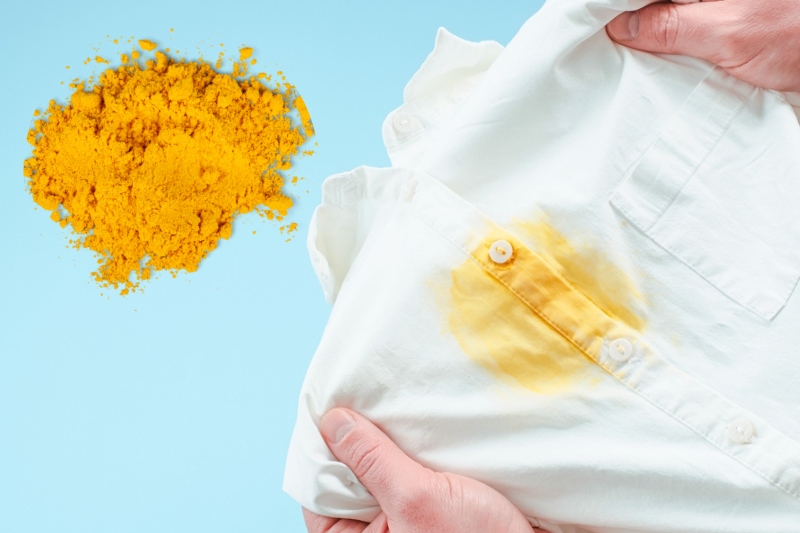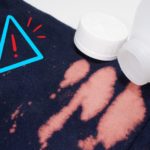Turmeric’s terrific at adding colour to a meal. Unfortunately, it’s just as terrific at adding colour to your shirt. This is why it’s often actually used as a dye.
This is also why you need to know how to get it out, otherwise you’ll go through your life looking like a spice oddity – Major Turmeric, no less – and you don’t want that.
This all-too-bright yellow-orange agent is the product of some compounds called curcuminoids, but you’re not going to care too much about that when you have patches on your clothes that look like you’ve been juggling with custard powder.
What you want to know is how to remove turmeric stains from clothes. Tea towels too. Happily, there are some good ways. Read on.
Before we start, we should make it clear that none of these methods are to be tried on clothes that are suitable for dry cleaning only. For these babies, you’re going to need to bring on the chemicals (or, even better, take it to the professionals).
Method 1: Laundry Detergent or Hand Sanitiser
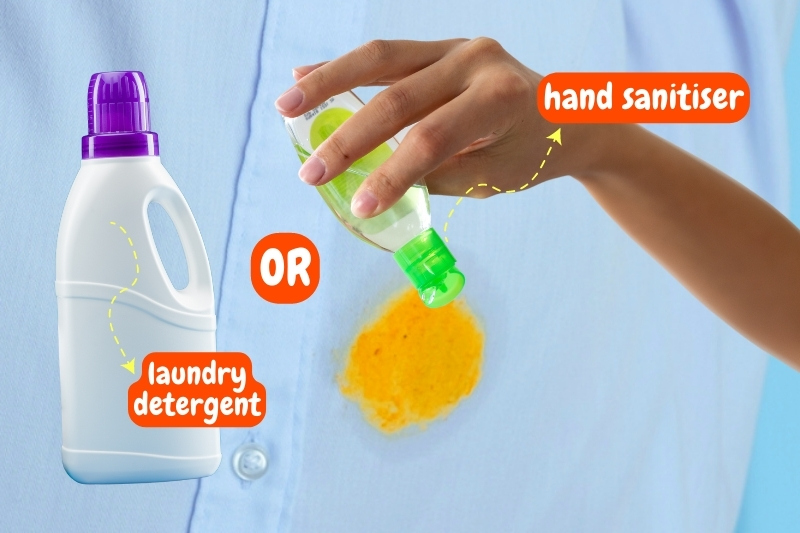
1. Minimise
Scrape up the powder or turmeric-filled liquid with a spoon, so you’ve got as much of the excess off as you can manage. Then dab the area with a paper towel to pick up some more. Don’t rub, don’t scrub. This will spread it. Just dab.
2. Pre-treat
Get some laundry detergent and dab it on the affected area. You know what else works really well? Hand sanitiser. The alcohol is great at breaking down the stain. Now, if only there was some of that around…
Apply the liquid, then use a soft brush to gently rub it into the stain. Then leave for 10 minutes to absorb.
3. Wash
Stick the item in the washing machine, on a cool cycle. Why cool? Hot can set a stain, so you have to be gentle with things. Use a normal amount of detergent.
4. Dry
If you can, line-dry your item of clothing. This is because sunlight has a natural bleaching action, which may see of any residual stain. If the item is a dark colour, you might want to dry indoors so that you avoid that bleaching action.
Method 2: Bicarbonate of Soda
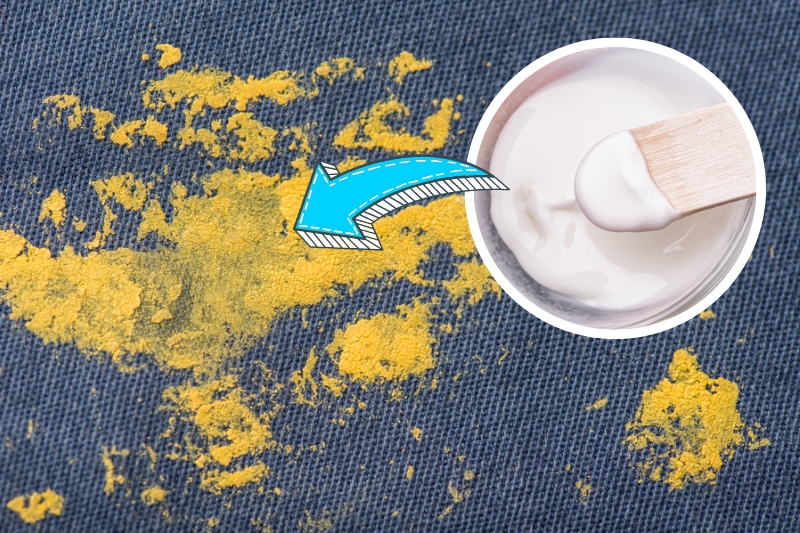
Minimise as above, but pre-treat with a little bicarbonate of soda paste instead of laundry liquid or sanitiser. Then wash and dry as above.
Note that this method’s especially good when you’ve got turmeric stains that are mixed with grease, which is sadly all too often the case with Indian food. Curse that ghee!
Method 3: Vinegar
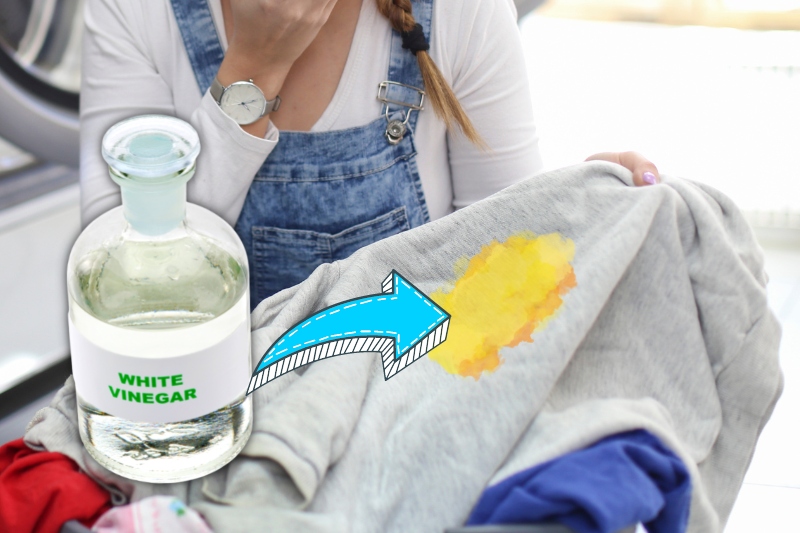
1. Apply
Minimise as above, by scraping off as much turmeric as you can with a spoon and then dabbing the area with a paper towel.
Then generously apply a mix of one tablespoon of washing-up liquid, one tablespoon of white vinegar and 500 ml of cold water, using a clean cloth.
2. Soak up
Use a clean dry sponge to soak up the excess liquid.
3. Repeat
You may find that this is all you need to do. If the stain’s not going away with repeated applications, then it’s a good idea to try the washing machine (again, cool wash).
Method 4: Oxygen Bleach
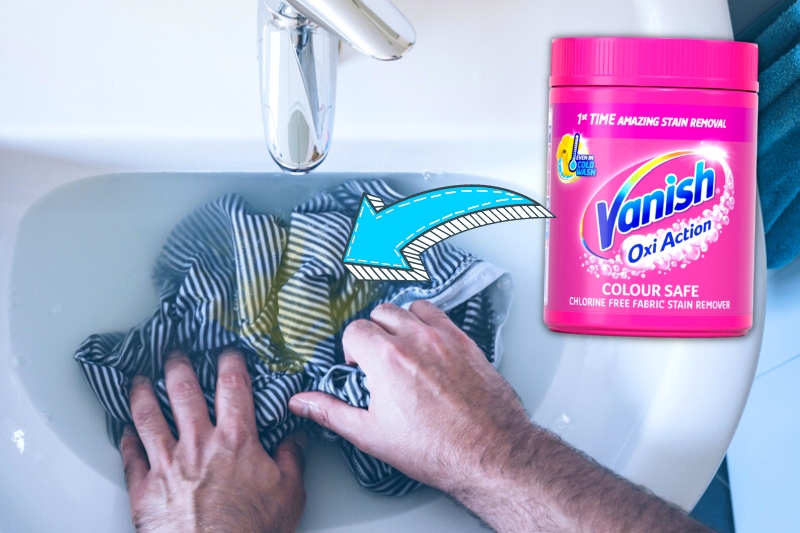
1. Minimise
Use a spoon to scrape away excess powder, then run under a cold tap to rid the garment of as much pigment as possible.
2. Dunk
Fill the sink with cold water and apply two to three tablespoons of an oxygen bleach like Vanish Oxy Action. Leave for 20-30 minutes. Rinse.
3. Spray + Wash
If the stain’s still visible, try spraying a stain remover on it, then put it in the washing machine on a cool wash. Dry outdoors.
Note – if it’s a white garment, you can add a little chlorine bleach to the washing machine if you wish.
Method 5: Lemon Juice
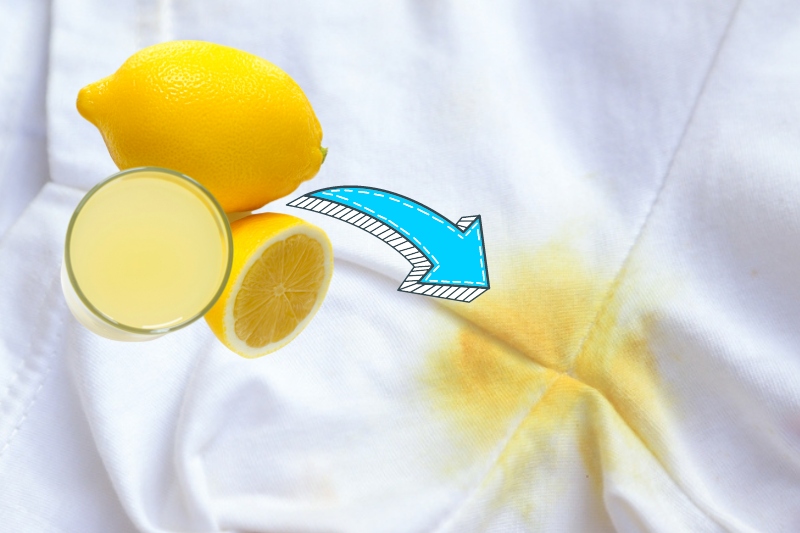
This one’s best for light and white clothes.
1. Rinse + ice
Rinse the affected area thoroughly with cold water, then grab an ice cube and press it into the stain.
2. Apply lemon juice
Apply lemon juice to the stain, or press slices of lemon on it. Difficult to believe that the solution to a yellow stain might be… more yellow, but stay with us – it has an amazing lightening action. Rub gently for up to 15 minutes.
3. Wash
Into the machine with the garment, on a cool wash. If any stain remains, apply more lemon and wash again.
As ever with these things, don’t tumble dry unless all staining has disappeared, as tumbling will set a stain for life.
Method 6: Methylated Spirit
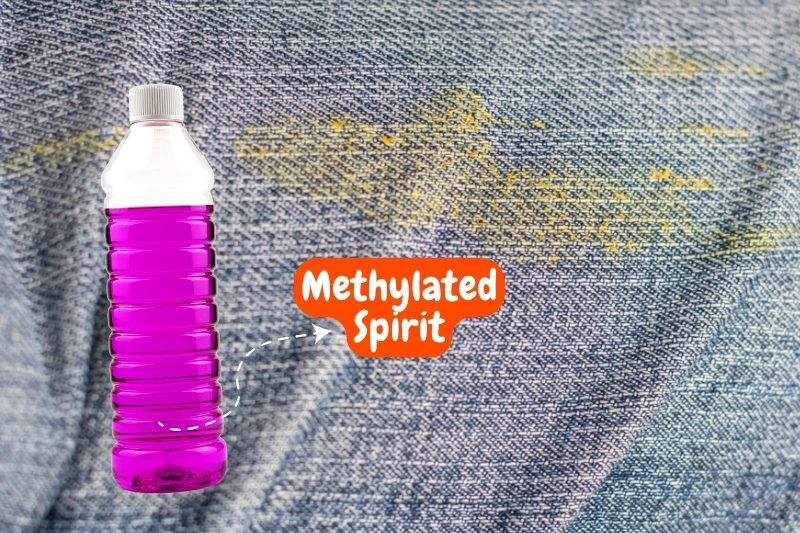
1. Minimise
Get rid of the excess with a spoon and paper towel.
2. Apply
Pour on a little methylated spirit. Dab into the stain with a clean, dry cloth. The stain will turn red, but don’t panic.
3. Blot
Soak up the colouration with a clean dry paper towel. Keep changing the paper towel for a new one as necessary.
4. Rinse + soak
Run the garment under cold water for a little while. Apply a mild laundry detergent liquid to the stained area and soak it in cold water for a few minutes.
5. Wash
Get that item of clothing into the washing machine and wash as normal.
6. Dry
If it’s a light-coloured garment, hang it outdoors to make the most of Mr Ray O’Sunshine and his whitening wonders, if possible.
What’s With All the Turmeric, Anyhow?
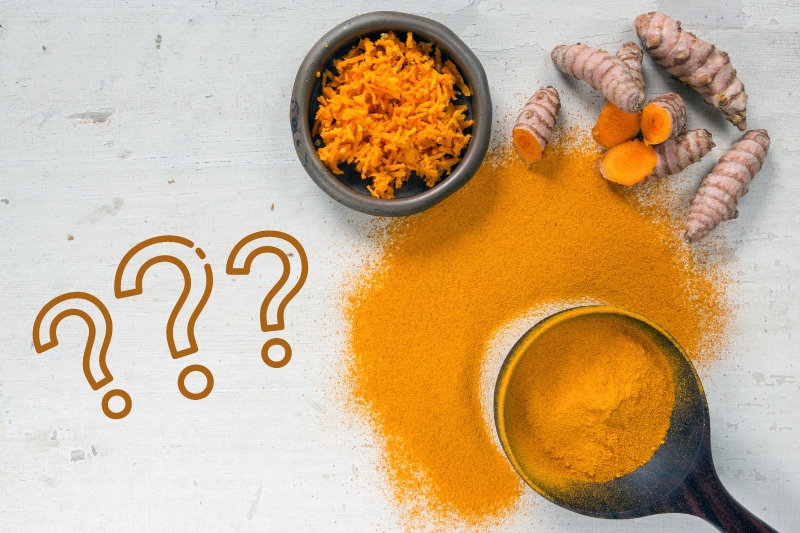
It’s not that long ago that you were about as likely to get turmeric stains on your clothes as you were likely to get quinoa stuck in your teeth. Foods like these just weren’t come across very much.
Aside from being a great and very cheap saffron substitute when your Indian or Moroccan dish needed a bit of amber action, turmeric hadn’t reached many people’s culinary radar.
All that changed when somebody discovered just how incredibly good turmeric is for you. What can it do for you? Try this list for size.
It’s been found to have loads of health benefits including anti-arthritic, anti-dementia, anti-cancer and anti-cardiovascular properties, as well as improving immunity and brightening mood.
It can improve skin condition, soothe indigestion and even increase our rate of burning calories.
Not at all bad for an ingredient that is usually thrown in just to make food go a nice colour.
Yellow Alert!
So, the next time some of that incredible ochre hue makes its way onto your bright whites, you know what to do.
You’ve got enough methods there to ensure that you’ve got the gear you need to take at least one step toward the conquest of spice.
A lot of staining materials, like red wine, black coffee, chocolate etc, have only minimal or debatable health benefits, so they haven’t really earned their right to stain.
Turmeric can be a real pain, but on the other hand it’s one of the most health-bestowing commodities there is, working hard to counter pain, depression and a host of virulent and deadly diseases. That’s got to be worth the odd stain, surely.

Martin’s life revolves around films, dogs and food, but rarely all at the same time. At least two out of these three like to give clothes and furniture a hard time, and Martin enjoys discovering and writing about new ways to stop them doing their worst.
